12 Types of Trees in Connecticut (with Pictures)
-

- Last updated:
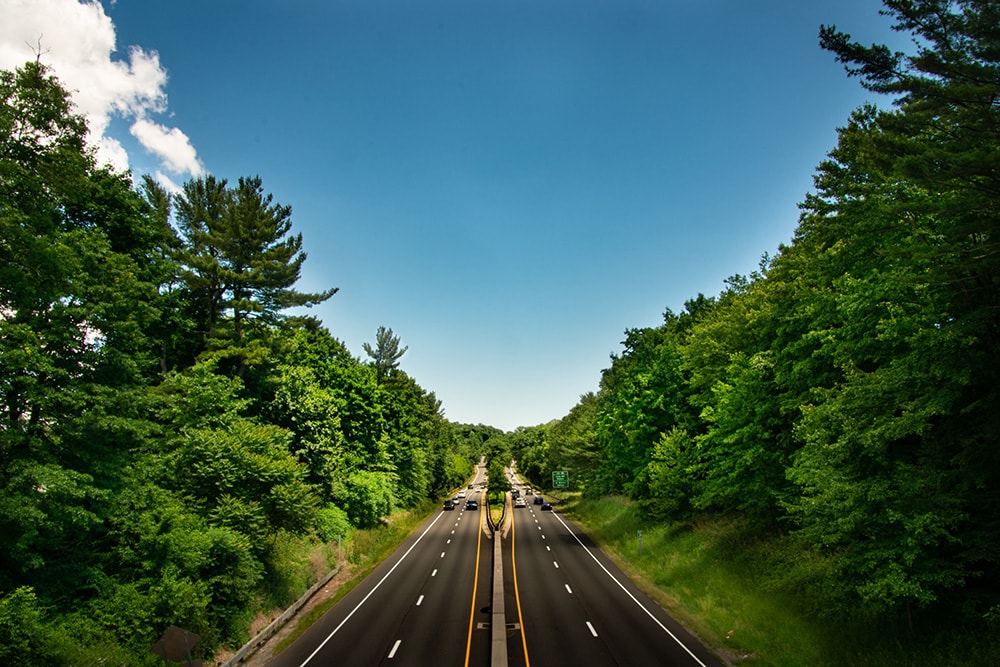
Connecticut may be the third-smallest state, but that doesn’t stop it from having some of the most beautiful natural landscapes in the country.
Like many states along the eastern seaboard, Connecticut is over 50% forest area. That means you’ll find a rich supply of arbors, from aromatic softwoods to sturdy hardwoods. Get to know the lay of the land with this look at 12 common types of trees in Connecticut.
The 12 Types of Trees in Connecticut
1. Red Maple
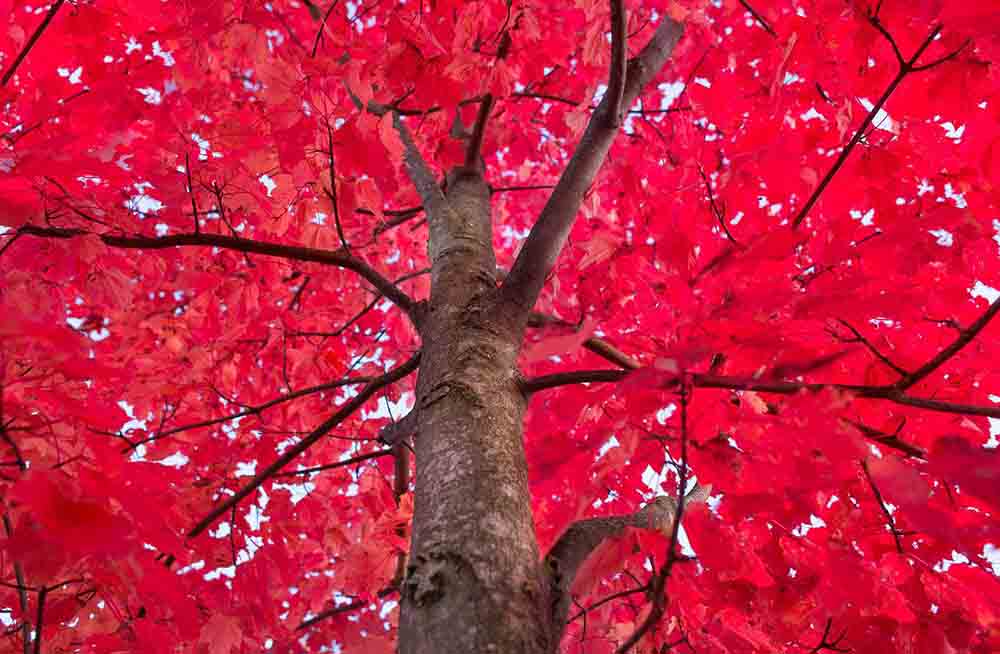
| Sun and Soil: | Full sun; moist, well-drained soil |
| Height: | 40–60 feet |
| Spread: | 35–45 feet |
The red maple (Acer rubrum) is one of the most attractive landscaping elements across the states. New leaves on these deciduous trees turn green in the summer before transitioning to brilliant shades of red in the fall, adding year-round interest to the yard. The samaras that arrive after the flowering season attract various rodents.
Since it’s a fast grower, the red maple makes an excellent shade tree. Cultivars reach heights of up to 60 feet and create gorgeous canopies over 40 feet wide.
2. Black Birch

| Sun and Soil: | Full sun; moist, well-drained soil |
| Height: | 40–50 feet |
| Spread: | 35–45 feet |
The black birch (Betula lenta) isn’t as vibrant as the red maple, but it’s still a marvelous specimen through and through. The scaly bark delivers a subtle yet attractive reddish-brown sheen, and the green leaves turn to a pleasant golden color as fall arrives. Crushing the stems of a mature plant releases a delightful wintergreen aroma.
The black birch makes a wonderful addition to yards and parks. It matures quickly but doesn’t live long. You can get the best growth by ensuring it receives full sun and moist, non-compacted soil.
3. White Oak
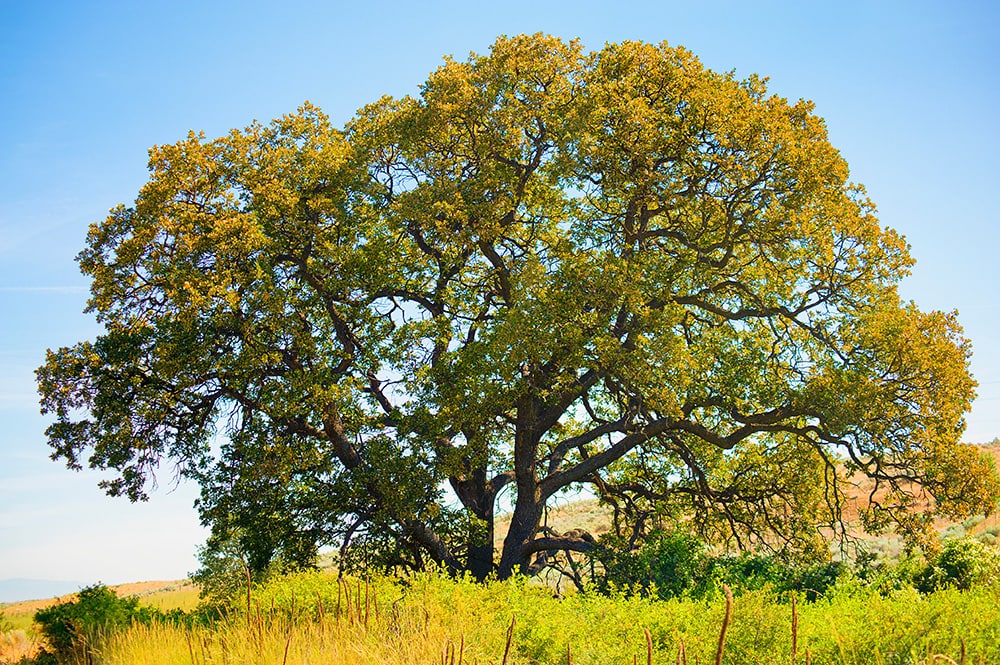
| Sun and Soil: | Full/partial sun; moist, well-drained soil |
| Height: | 50–80 feet |
| Spread: | 50–80 feet |
The white oak (Quercus alba) is as attractive as it is economically essential. The tree provides some of the highest quality and most accessible hardwood for flooring and furniture. As it grows, it develops fantastic fall foliage in reds, browns, and burnt orange hues.
White oaks can live for centuries, taking their time as they grow to heights over 100 feet in some cases. They can adapt to various growing conditions and drought but need deep, acidic soil to thrive.
4. Eastern Hemlock

| Sun and Soil: | Full/partial sun; moist, well-drained soil |
| Height: | 40–70 feet |
| Spread: | 25–35 feet |
As a versatile evergreen, the Eastern hemlock (Tsuga canadensis) is an excellent landscaping option for hedges and privacy screens. It grows straight in a pyramid shape. The needles are a lustrous dark green, and an abundance of cones emerge during the fruiting season to add an ornamental element.
The Eastern hemlock is a valuable specimen thanks to its general hardiness. Since its primary weaknesses are heat, drought, and urban pollution, Connecticut provides the perfect conditions to let it flourish as a backyard shade tree.
5. Northern Red Oak

| Sun and Soil: | Full/partial sun; moist, well-drained soil |
| Height: | 60–75 feet |
| Spread: | 60–75 feet |
Though it grows faster than the white oak, the northern red oak (Quercus rubra) doesn’t grow quite as tall, nor is it as sturdy. Nevertheless, it’s still a popular hardwood for flooring, millwork, furniture, and many more applications. As a shade tree, it provides fascinating red fall colors through its bristle-tipped, multi-lobed leaves.
Northern red oak enjoys rich, well-drained soil, but its tolerances make it an excellent specimen for various soil conditions. It can handle drought, alkaline soil quality, and even mild salt levels in the soil, making it ideal for seaside gardens.
6. American Beech
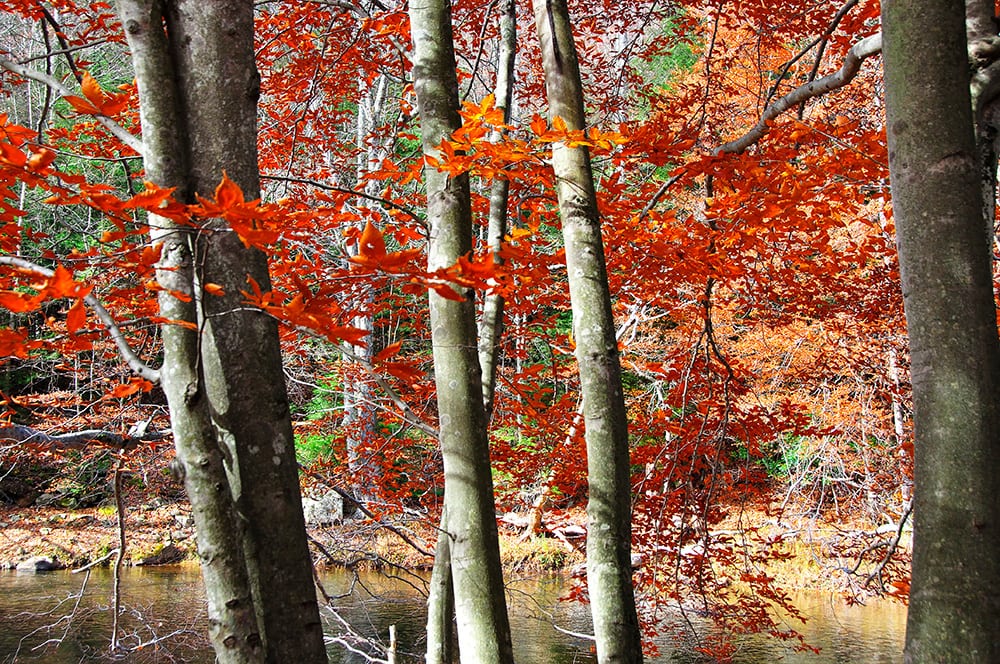
| Sun and Soil: | Full/partial sun; moist, well-drained soil |
| Height: | 50–70 feet |
| Spread: | 50–70 feet |
An American beech (Fagus grandifolia) is a specimen you plant for future generations to enjoy. It’s a lovely shade tree, and the serrated leaves change from lush greens to striking russet reds in the fall for ongoing seasonal interest. Edible beechnuts attract local wildlife like squirrels, raccoons, and game birds.
An American beech tree takes a while to reach full size, but it can live for over 200 years in decent conditions. It resists disease and pests but does not grow well during drought and flooding or if the soil has a relatively high salt content.
7. Sugar Maple
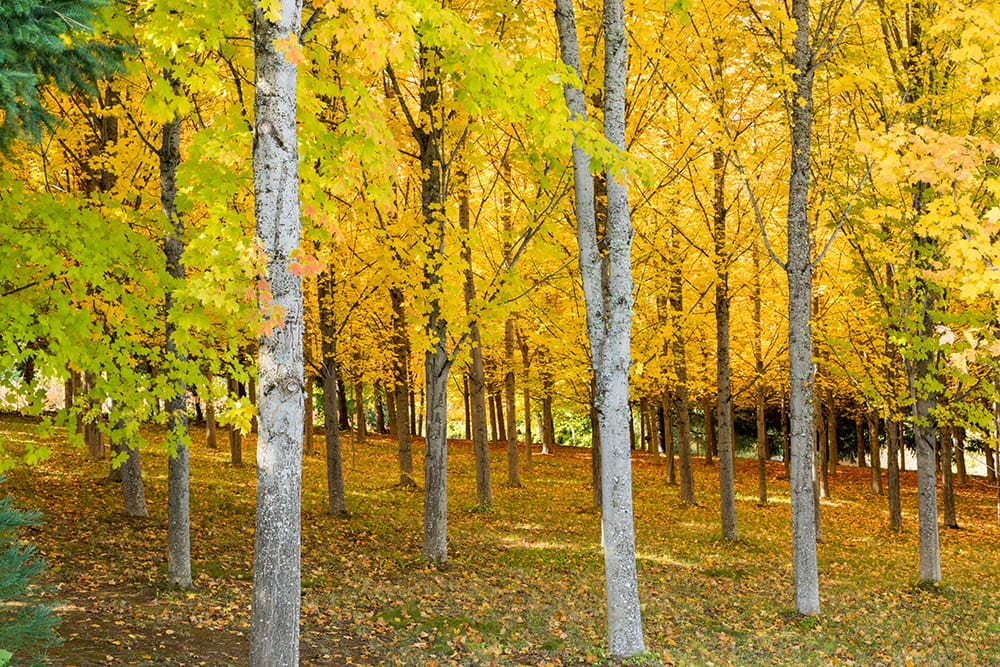
| Sun and Soil: | Full/partial sun; moist, well-drained soil |
| Height: | 60–75 feet |
| Spread: | 40–50 feet |
As one of the country’s most popular trees, the sugar maple (Acer saccharum) is attractive in every sense of the word. Light green foliage turns to stunning red, yellow, and orange colors in the fall to make it one of the more intriguing shade trees. Its fruit invites all kinds of mammals, game birds, and songbirds to add life to the backyard.
Sugar maple also has diverse commercial applications. It’s one of the most widely used maple varieties in the production of fine furniture, flooring, and veneers. More importantly, its copious sap production is a foundation of the syrup and sugar industry. It’s an easy tree to grow, offering tons of gorgeous shade for the backyard and a rare opportunity to try your hand at homemade maple syrup.
8. Eastern White Pine
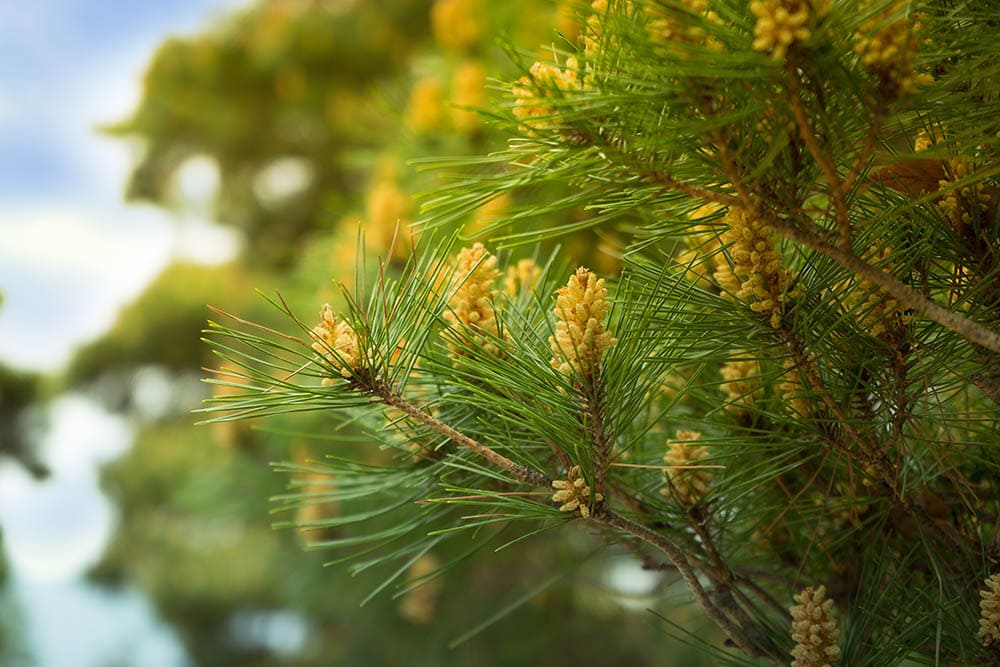
| Sun and Soil: | Full/partial sun; moist, well-drained soil |
| Height: | 50–80 feet |
| Spread: | 20–40 feet |
The Eastern white pine (Pinus strobus) is a hardy, towering softwood with several benefits in the backyard. It makes an excellent windbreak due to its tall growth and outstretched branches, and its clusters of feathery blue-green needles add year-round color to the yard.
Due to its remarkably fast, straight, and high growth habits, Eastern white pine is one of the most popular sources for pine flooring, trim work, and furniture parts. Although you likely won’t be milling your trees anytime soon, that kind of stature can make a strong statement in the yard.
9. Black Cherry
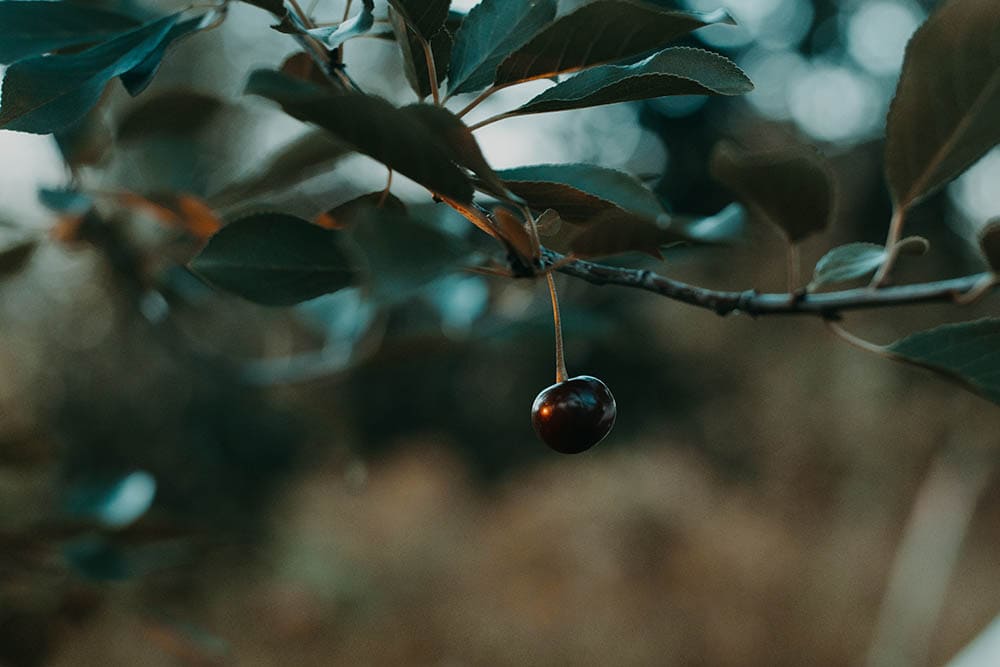
| Sun and Soil: | Full sun; Well-drained soil |
| Height: | 50–60 feet |
| Spread: | 20–30 feet |
The black cherry (Prunus serotina) is a world of delights from a tall-growing garden centerpiece. Showy white flowers grow in thick, cylindrical clusters along the branches in the spring, while the glossy green leaves turn variegated shades of deep reds and oranges in the fall.
Between the flowers and the fall foliage lies the fruit growth, an essential aspect of the black cherry’s unique character. The pitted fruits are edible off the branch, and you can use them to make wine and preserves. Unpicked fruit is a huge draw for local wildlife.
10. Yellow Birch
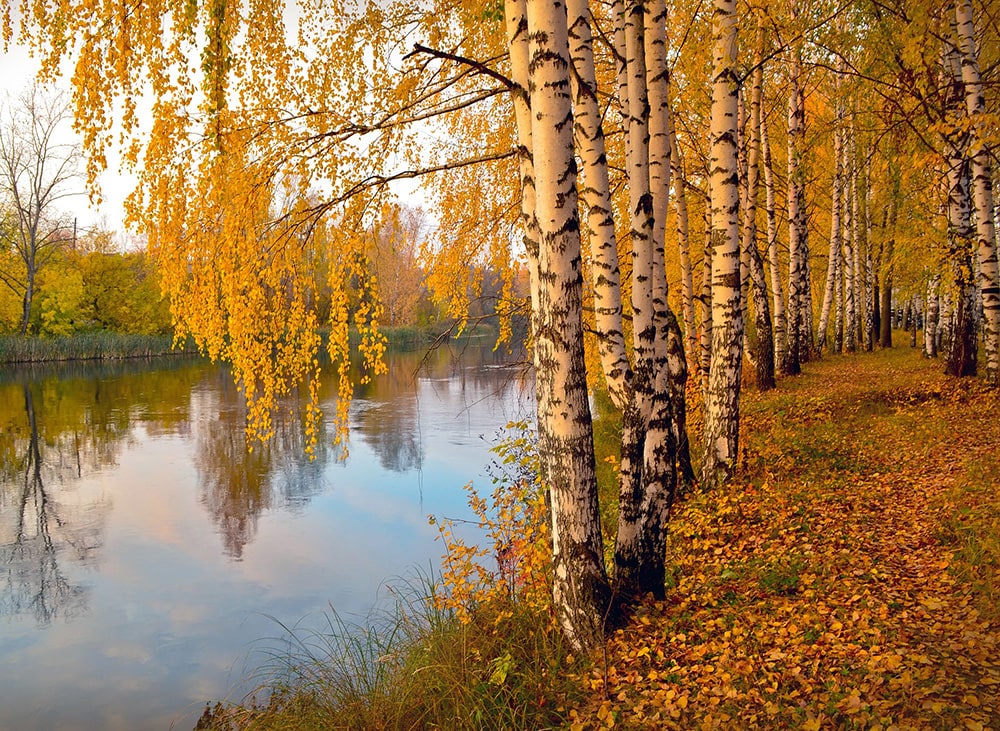
| Sun and Soil: | Full/partial sun; Moist, well-drained soil |
| Height: | 60–75 feet |
| Spread: | 60–75 feet |
The yellow birch (Betula alleghaniensis) is one of the largest hardwoods in the Connecticut area and one of the most appealing. It typically grows over 50 feet tall and is extremely easy to tend, especially in cooler climates where it prefers to grow.
Although it looks similar to the black birch in its youth, the yellow birch matures to show off a unique and readily identifiable bark pattern. Curly strips peel off the tree’s trunk in shimmery shades of silver, brown, and yellow. In the fall, the green leaves change to a dazzling gold color.
11. Pignut Hickory
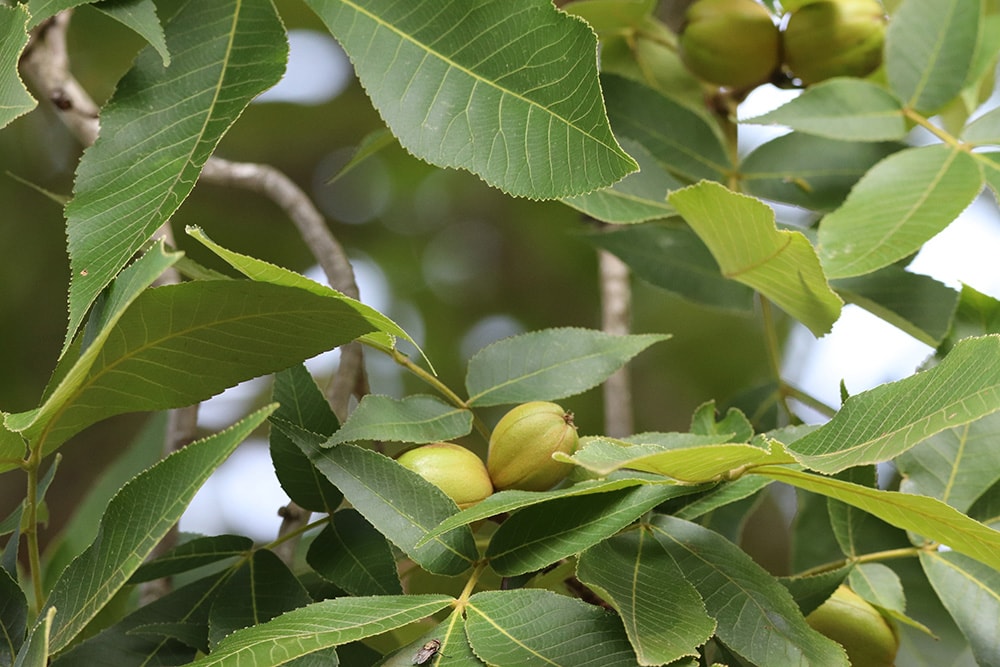
| Sun and Soil: | Full/partial sun; Moist, well-drained soil |
| Height: | 50–60 feet |
| Spread: | 50–60 feet |
While shagbark and shellbark varieties might be slightly more abundant, the pignut hickory (Carya glabra) is a notable Connecticut hardwood. It features tight bark patterns, making it easier to identify, and the pinnate leaves turn bright shades of golden-orange and yellow.
Although it’s remarkably dense and viable for making tools and furniture, the pignut hickory isn’t the best shade tree to add to the lawn. The tall-growing specimen is difficult to transplant due to its deep taproot, and its abundance of nuts can create a backyard mess as fall approaches.
12. Eastern Redbud
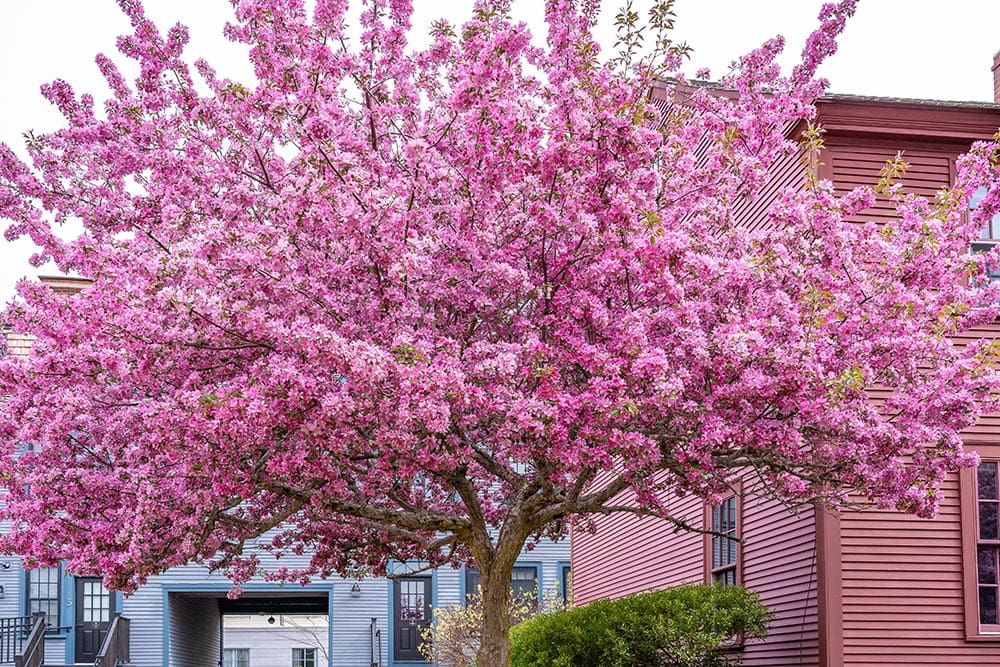
| Sun and Soil: | Partial sun; Moist, well-drained soil |
| Height: | 20–30 feet |
| Spread: | 25–35 feet |
The Eastern redbud (Cercis canadensis) is a backyard treat when its showy flowers arrive in April and May. The bright pink and magenta blooms fill the tree for 2–3 weeks before making way for lustrous green summer leaves.
The tree doesn’t grow as tall as many other deciduous Connecticut trees, but it makes an eye-catching point of interest in the yard and is relatively easy to grow. It doesn’t typically live much longer than 20 years, but if you can protect it from intense heat, it can make a low-maintenance, high-reward addition to your landscaping.
Conclusion
It’s incredible how much wilderness can be found in such a small area. Despite its dense urban centers, Connecticut contains a diverse expanse of plant life, with vast stretches of wooded forests home to countless tree varieties. Take this list on your next camping excursion, and see how many you can identify!
Featured Image Credit: Christopher Luther, Unsplash
Contents

